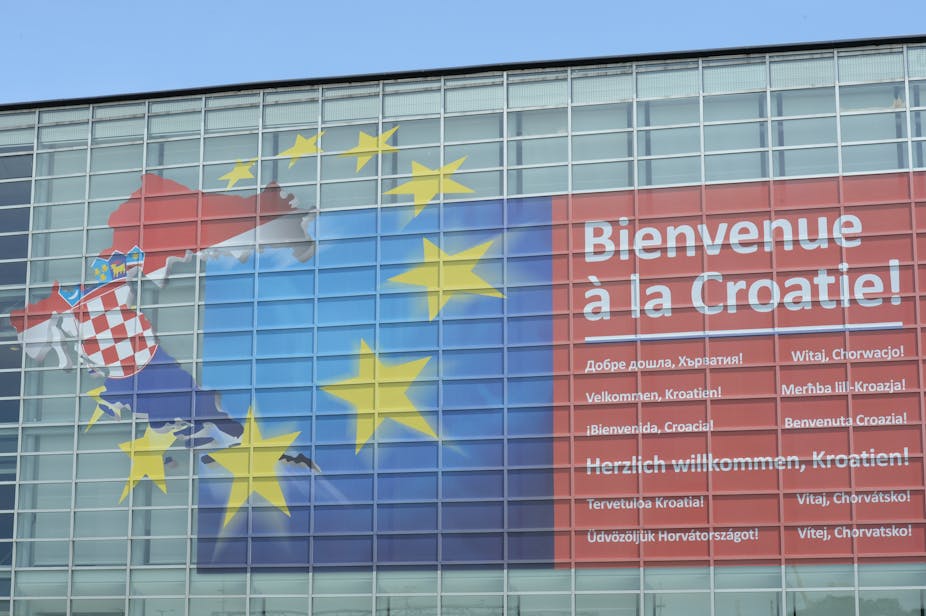Croatia only joined the European Union in July last year, so this week will see Croatians elect MEPs for the second time in just over a year. Whether this could explain the current lack of interest in the EU elections is not clear.
According to a poll conducted in January only 42.4% voters knew there would be elections for the European parliament in May.
The first Croatian election for the EU parliament was held in April 2013 and the outcome was a clear victory for the centre-right coalition led by the Croatian Democratic Union (HDZ) who emerged with 6 of 12 seats earmarked for Croatian MEPs. The HDZ is a member of the European People’s Party (EPP) in the European Parliament and is currently the main opposition party nationally.
Although European elections are generally seen as second-order elections across all member states, the turn-out of 20.84% in Croatia was especially low, but the often-heard explanation that parties did not invest much time or money in getting the vote out for a one-year term simply does not hold water. Both the governing Social Democratic Party (SDP) and the HDZ consider the European Parliament election not only as a way to gauge their current support, but also as an opportunity to improve their standing on the national political scene.
Strange bedfellows
One of the peculiar outcomes of the 2013 election was the election of an extreme right-wing MEP from the Croatian Party of Rights (HSP-AS), Ruža Tomašić, in the HDZ coalition list. Tomašić is not necessarily a Eurosceptic but is a hardcore nationalist who argues that “Croatia is for Croats” while “everyone else is a guest”.

Tomašić promptly joined the right-leaning European Conservatives and Reformists (ECR) as opposed to the EPP group that the rest of the HDZ MEPs joined, drawing criticism from Joseph Daul, EPP’s leader in the European parliament. But HDZ president Tomislav Karamarko, who leans further to the right than most in the EPP, has added Tomašić to its coalition list in this election as well.
Another curiosity is the inclusion of a diaspora representative stemming from HDZ’s branch in Bosnia and Herzegovina to represent all the Croats still living there.
Further on the right is the Alliance for Croatia which is dominated by the Croatian Democratic Alliance of Slavonia and Baranja (HDSSB) whose leader, Branimir Glavaš, is currently serving an eight-year sentence for war crimes. opinion polls reflect their strong regional base, predicting they will win one seat in the EU election.
Left standing
On the left, the ruling Kukuriku (“Cock-a-doodle-doo”) coalition led by the SDP has been plagued by persistent scandals and an inability to improve Croatia’s sluggish economy. The coalition is poised to win four seats in the European Parliament: two of them by SDP members while the remaining two are likely to go to the regional Istrian Democratic Assembly (IDS) and the more liberal-leaning Croatian People’s Party (HNS), both members of the ALDE/ADLE group in the European parliament.
One suprise package that should be flagged is Croatian Sustainable Development (ORaH) which is led by Mirela Holy, a keen ecologist and a LGBT rights promoter. According to a recent CRO-Demoskop survey she is Croatia’s second-favourite politician (after the president Ivo Josipović).
For the HDZ, a victory in the European elections would be used to demand early parliamentary elections (which will otherwise be held in the late 2015) while a victory for the SDP would be hailed as a vote of confidence in the current government, giving it the impetus it needs to tackle rising unemployment and other economic issues. The various small parties and regional groups are jockeying for position and headlines ahead of next year’s elections.

